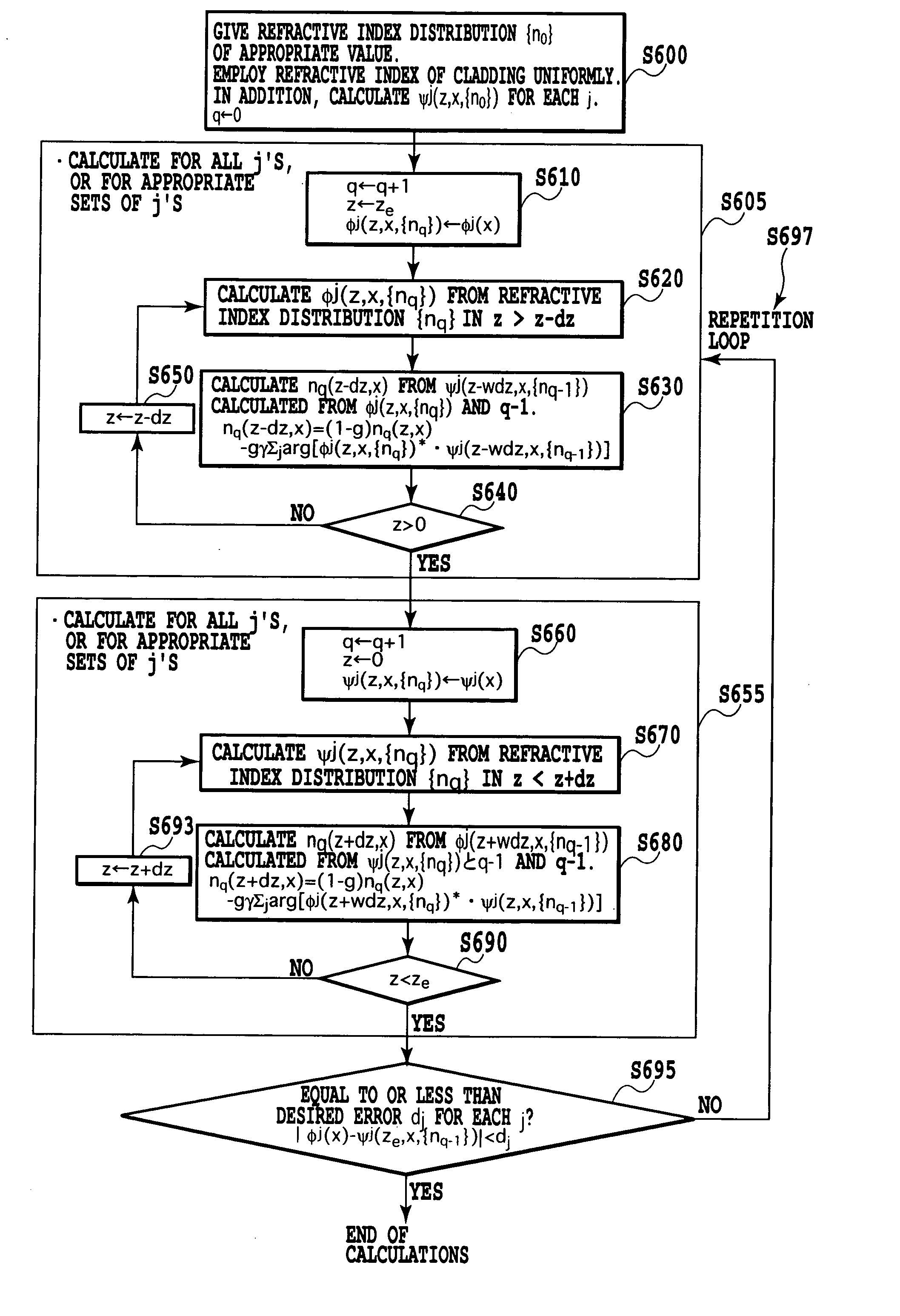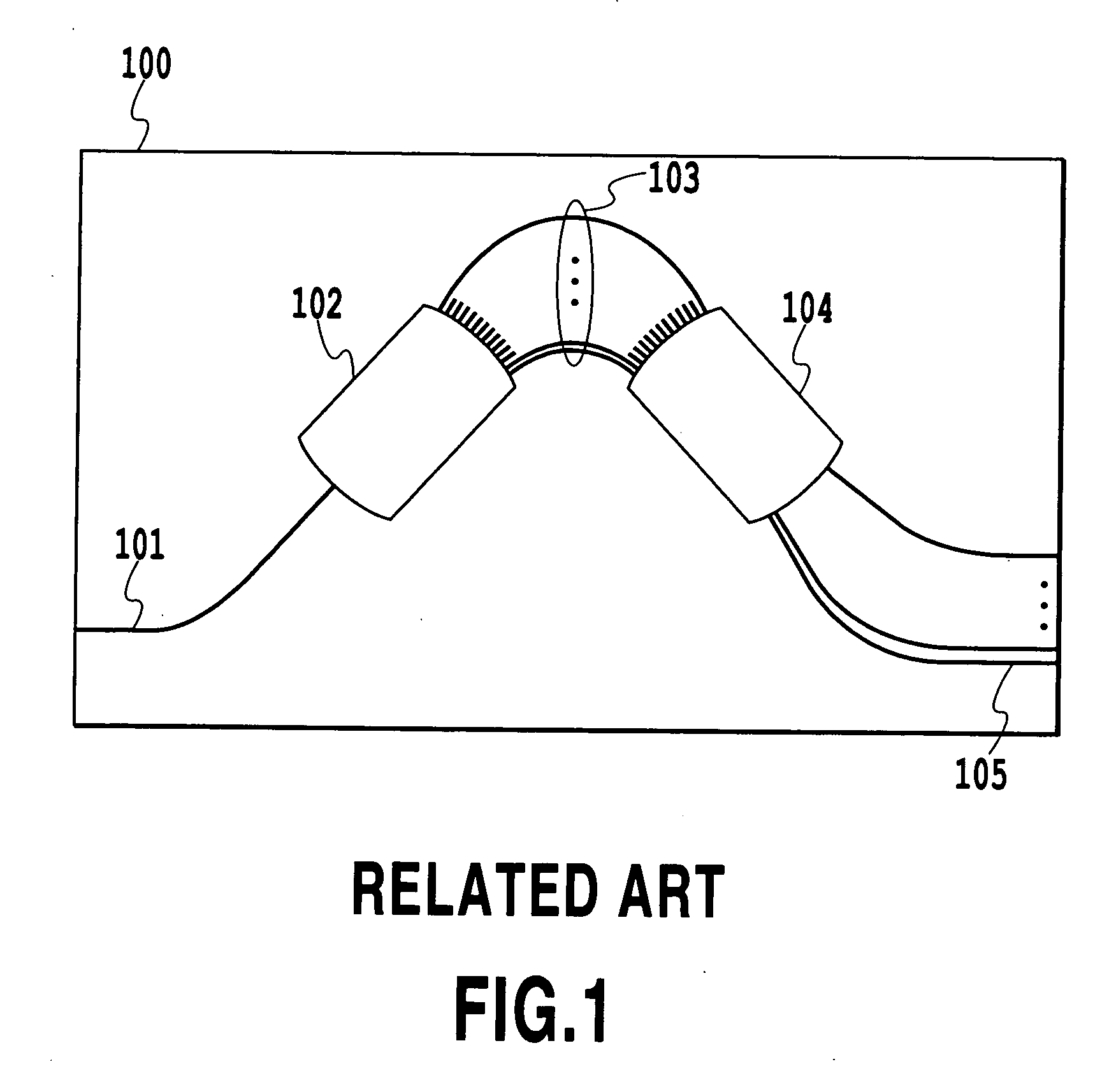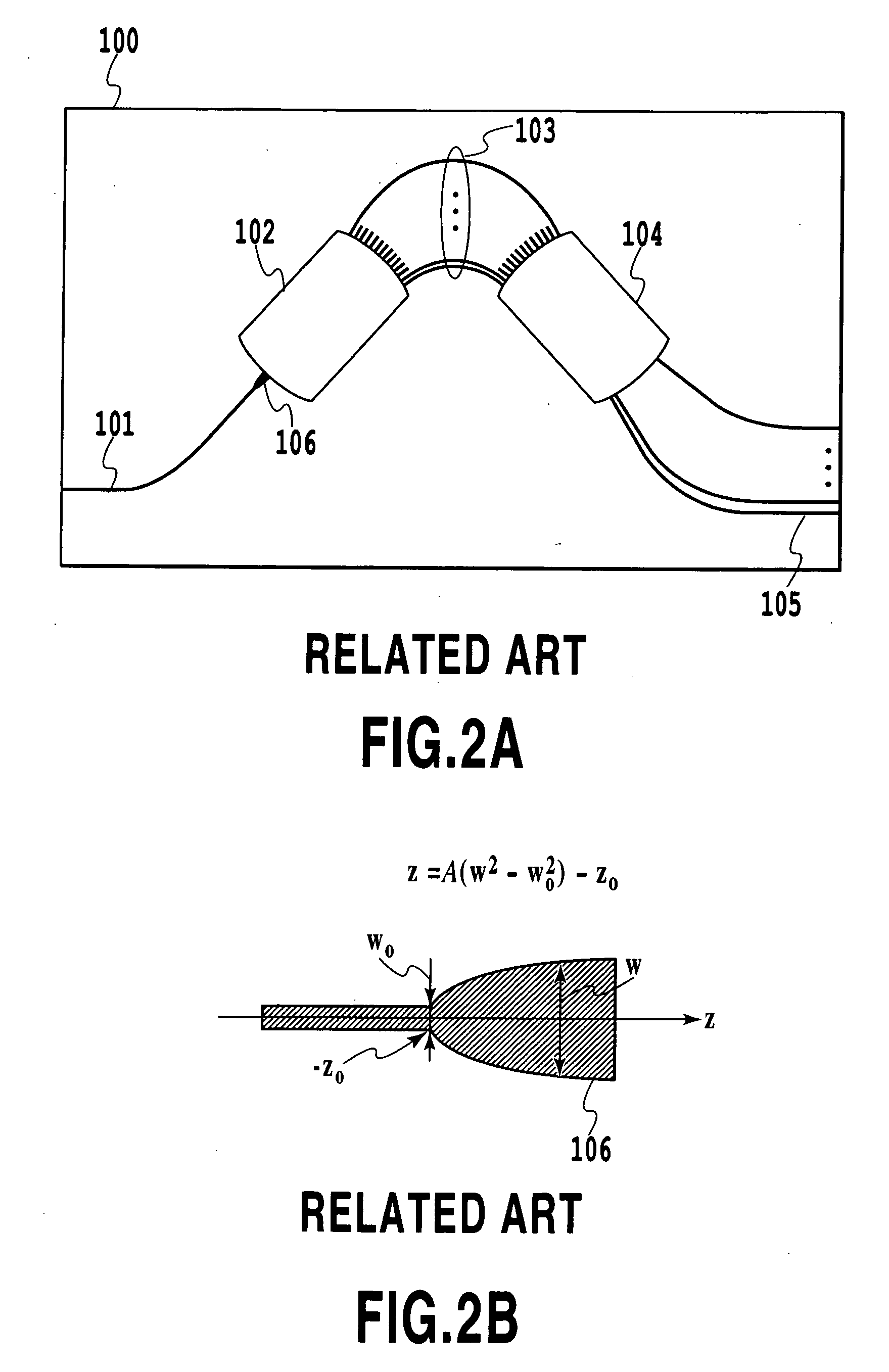Wave transmission medium and waveguide circuit
a waveguide circuit and transmission medium technology, applied in the field of wave transmission medium and waveguide circuit, can solve the problems of reducing the flexibility of circuit configuration, sharply increasing the size of optical circuit, and increasing the optical path length of optical waveguide circuit, so as to achieve high efficiency, compact optical circuit, and flexible optical input/output.
- Summary
- Abstract
- Description
- Claims
- Application Information
AI Technical Summary
Benefits of technology
Problems solved by technology
Method used
Image
Examples
embodiment 1
[0216] As for the so-called step-index optical circuit, it is not self-evident as to whether an optical circuit can be designed according to the foregoing expression (1) because the value the refractive index can take is limited. However, even in the case where the value the refractive index can take is limited, it is possible to adjust the optical phase globally by repeating adjustment of the local refractive indices. Therefore it is possible to design the optical circuit by assuming a steplike refractive index distribution that has an upper limit of the refractive index of the dielectric constituting the optical circuit and a finite number of refractive indices reaching the upper limit, and by calculating the refractive index distribution of the optical circuit using the refractive indices as a limit value. The present embodiment designs the optical circuit based on such an idea.
[0217] In the present embodiment, the idea is applied to an optical waveguide that has the same struct...
embodiment 2
[0231] The present embodiment designs the same optical circuit as that of the embodiment 1 in accordance with the following calculation method of the refractive index distribution. The outline of the optical circuit will be briefly described with reference to FIG. 5, again. First, an arbitrary refractive index distribution {n} is given, and the field distribution 1, ψj(z, x, {n}), of the input light corresponding to the distribution {n} is calculated. Then, the reverse propagation light (field distribution 2, fj(z, x, {n})) with the field expected to be output from the output port as the output light is successively calculated by virtually transmitting the reverse propagation light toward the incidence plane 2-1.
[0232] Take an example of FIG. 8. First, the refractive index distribution is changed such that the phase of the cross section ψj(zx, x, {n}) of the field distribution 1 at a location z=zx matches the phase of the cross section fj(zx+Δz, x, {n}) of the field distribution 2 ...
embodiment 3
[0249] In the present embodiment, a design method will be described of a wavelength division multi / demultiplexing circuit for demultiplexing and / or multiplexing four wavelengths 1.53 μm, 1.54 μm, 1.55 μm and 1.56 μm.
[0250]FIGS. 16A and 16B are diagrams illustrating condition settings for the optical circuit design of the four-wavelength demultiplexer of the present embodiment: FIG. 16A illustrates the case where only a TE mode is set as the polarization state of the input light; and FIG. 16B illustrates the case where a TM mode in addition to the TE mode is set as the polarization state of the input light.
[0251] First, in the case of setting only the TE mode, wavelength division multiplexed light is input to the input port 3-1, and optical waves with different wavelengths are emitted from the individual ports of the output port 3-2 as illustrated in FIG. 16A. The incidence plane 2-1 includes one input port 3-1, and the emitting plane 2-2 includes four ports a, b, c and d. The ligh...
PUM
 Login to View More
Login to View More Abstract
Description
Claims
Application Information
 Login to View More
Login to View More - R&D
- Intellectual Property
- Life Sciences
- Materials
- Tech Scout
- Unparalleled Data Quality
- Higher Quality Content
- 60% Fewer Hallucinations
Browse by: Latest US Patents, China's latest patents, Technical Efficacy Thesaurus, Application Domain, Technology Topic, Popular Technical Reports.
© 2025 PatSnap. All rights reserved.Legal|Privacy policy|Modern Slavery Act Transparency Statement|Sitemap|About US| Contact US: help@patsnap.com



